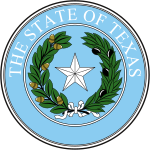| |||||||||||||||||||||||||||||||||||||
All 150 seats in the Texas House of Representatives 76 seats needed for a majority | |||||||||||||||||||||||||||||||||||||
|---|---|---|---|---|---|---|---|---|---|---|---|---|---|---|---|---|---|---|---|---|---|---|---|---|---|---|---|---|---|---|---|---|---|---|---|---|---|
| Turnout | 52.72% | ||||||||||||||||||||||||||||||||||||
| |||||||||||||||||||||||||||||||||||||
Republican hold Democratic hold Democratic gain Republican: 40–50% 50–60% 60–70% 70–80% 80–90% ≥90% Democratic: 40–50% 50–60% 60–70% 70–80% 80–90% ≥90% | |||||||||||||||||||||||||||||||||||||
| |||||||||||||||||||||||||||||||||||||
| Elections in Texas |
|---|
 |
|
|
The 2018 Texas House of Representatives elections took place as part of the biennial United States elections. Texas voters elected state representatives in all 150 of the state house's districts. The winners of this election served in the 86th Texas Legislature. State representatives serve two-year terms in the Texas House. A statewide map of Texas' state House districts can be obtained from the Texas Legislative Council here, and individual district maps can be obtained from the U.S. Census here.
A primary election on March 6, 2018, determined which candidates appeared on the November 6 general election ballot. Primary election results can be obtained from the Texas Secretary of State's website.[1]
Following the 2016 state house elections, Republicans maintained effective control of the House with 95 members. Democrats held 55 seats following the 2016 elections.
In the 2018 election, Democrats flipped 12 seats in the Texas House, leaving Republicans with an 83–67 advantage in the House.[2]
This election marks the first time since 2008 that Democrats have won a state house race in Williamson, Hays, or Blanco counties, as well as the first time since 1982 that Democrats have won a state house race in Denton County.[3]
- ^ "Election Results". Texas Secretary of State. Retrieved August 3, 2018.
- ^ Pollock, Cassandra; Anchondo, Carlos; Waller, Allyson (November 6, 2018). "Democratic women lead biggest shift in Texas House since 2010 midterms". Texas Tribune. Retrieved November 9, 2018.
- ^ "Legislative Reference Library | Legislators and Leaders | Texas Legislators: Past & Present". lrl.texas.gov. Retrieved February 24, 2022.



